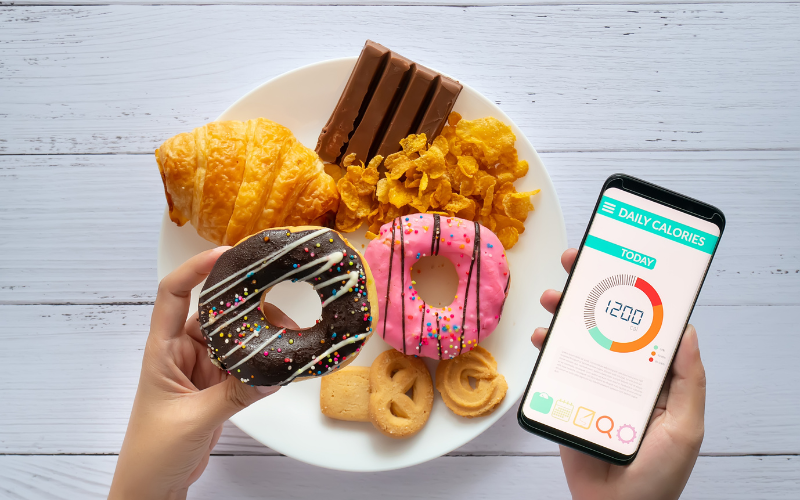
How to find Ideal Calories
How to Find Ideal Calories
When it comes to fitness and health goals—whether fat loss, muscle gain, or maintaining a healthy lifestyle—calorie intake is everything. But how do you figure out how many calories your body actually needs?
Your body burns calories just by existing. Even when you’re resting, it’s using energy to breathe, digest, think, and keep your organs functioning. Add movement, exercise, and daily tasks, and that calorie need increases.
Finding your ideal daily calorie intake means calculating how much energy your body uses, then adjusting based on your goals.
Let’s break it down step-by-step:
Step 1: Understand the Basics
To find your ideal calories, you need to know two things:
-
BMR (Basal Metabolic Rate) – the number of calories your body needs at rest.
-
TDEE (Total Daily Energy Expenditure) – your BMR plus the calories burned through activity.
Your ideal calories depend on your goal:
-
Fat Loss = Eat fewer than your TDEE (caloric deficit)
-
Muscle Gain = Eat more than your TDEE (caloric surplus)
-
Maintenance = Eat at your TDEE
Step 2: Calculate Your BMR
Your Basal Metabolic Rate is the amount of energy your body uses at complete rest. The most accurate formula to calculate this is the Mifflin-St Jeor Equation:
🔹 For Men:
BMR = 10 × weight (kg) + 6.25 × height (cm) – 5 × age (years) + 5
🔹 For Women:
BMR = 10 × weight (kg) + 6.25 × height (cm) – 5 × age (years) – 161
✅ Example:
Let’s say you’re a 25-year-old woman, 60kg, and 165cm tall:
BMR = 10 × 60 + 6.25 × 165 – 5 × 25 – 161
= 600 + 1031.25 – 125 – 161
= 1345.25 calories/day
This is how many calories she burns just to stay alive.
Step 3: Calculate Your TDEE
Now factor in your activity level. Multiply your BMR by an Activity Multiplier:
| Activity Level | Description | Multiplier |
|---|---|---|
| Sedentary | Little/no exercise | 1.2 |
| Lightly active | Light exercise/sports 1–3 days/week | 1.375 |
| Moderately active | Moderate exercise 3–5 days/week | 1.55 |
| Very active | Hard exercise 6–7 days/week | 1.725 |
| Extra active | Very hard training, physical job, 2× training/day | 1.9 |
✅ Continuing the Example:
If that same woman exercises moderately:
TDEE = 1345 × 1.55 = 2084.1 calories/day
That’s her maintenance level—the number of calories she needs to maintain her current weight.
Step 4: Set Your Calorie Goal Based on Your Objective
Once you know your TDEE, adjust your intake to match your goal:
🔻 For Fat Loss (Caloric Deficit)
-
Subtract 15–25% from your TDEE
-
Moderate deficit = sustainable fat loss, less muscle loss
-
Don’t go below 1,200–1,400 calories/day for women, or 1,600–1,800 for men (unless medically advised)
Example:
2084 × 0.80 = 1667 calories/day (20% deficit)
🔺 For Muscle Gain (Caloric Surplus)
-
Add 10–20% to your TDEE
-
Helps fuel muscle growth and performance
-
Combine with resistance training
Example:
2084 × 1.15 = 2396 calories/day (15% surplus)
➖ For Maintenance
-
Eat around your TDEE (±100 calories based on your body feedback)
Step 5: Monitor and Adjust
Finding your ideal calorie intake is not a one-time calculation. Your body changes with weight loss, muscle gain, and activity shifts.
🔁 Recalculate your TDEE when:
-
Your weight changes significantly (5+ kg)
-
You switch from sedentary to active lifestyle (or vice versa)
-
You plateau in weight loss or muscle gain
Also, track your progress:
-
Use a food diary or app (like MyFitnessPal or Cronometer)
-
Weigh yourself weekly
-
Track measurements, energy levels, performance, and hunger
Pro Tip: Calories Are Only Half the Story
Calories are important, but where those calories come from matters too. That’s why macro tracking (protein, carbs, fat) often goes hand-in-hand with calorie goals. For example:
-
2,000 calories from soda and chips ≠ 2,000 calories from chicken, rice, and veggies.
-
High-quality foods = better satiety, better results.
Conclusion
Knowing your ideal calories gives you control over your body and your results. Whether you’re leaning out, bulking up, or maintaining a healthy lifestyle, the right calorie intake forms the foundation.
Start with your BMR → calculate your TDEE → set your calorie goal → monitor → adjust.
Fuel smart. Train hard. Thrive strong.
